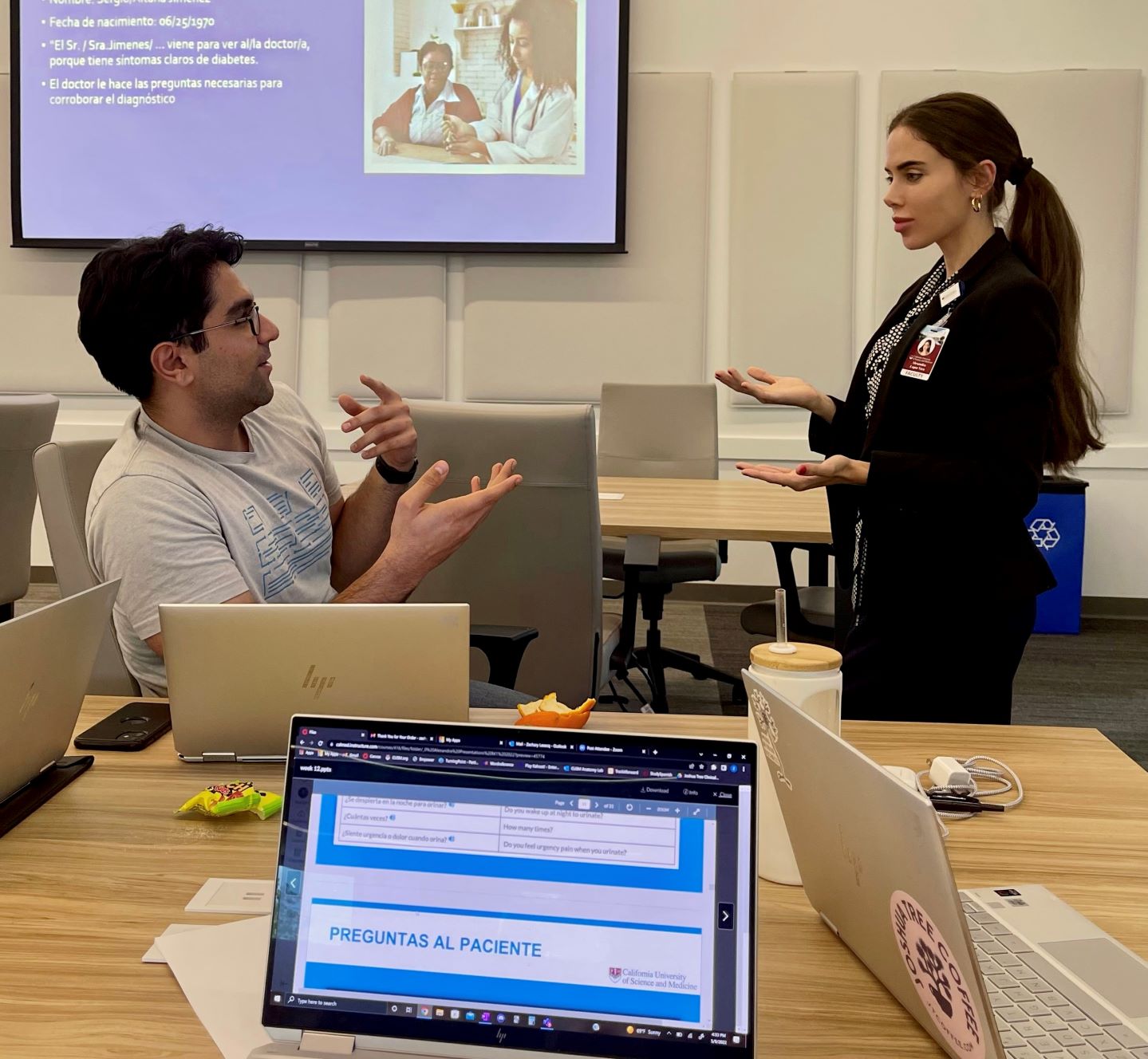Vida, Medical Spanish Program
About the Vida Medical Spanish Program
Linguistic barriers between Spanish-speaking patients and non-Spanish-speaking healthcare providers continue to drive disparities in access, communication, and outcomes across the U.S. healthcare system. The Vida Medical Spanish program at CUSM was developed to address these inequities by preparing future physicians to provide high-quality, linguistically concordant care through a curriculum that is immersive, rigorous, and culturally responsive.
Beginning in 2024–2025, Spanish for Healthcare Professionals I became a required course for all first-year medical students. In 2025–2026, Spanish for Healthcare Professionals II became a required second-year continuation. These two core courses are fully aligned with the MD system-based curriculum and structured to meet students at every level of Spanish proficiency.


From the first week, students are immersed in medical Spanish through a comprehensive instructional model grounded in evidence-based second language acquisition strategies, including task-based language teaching, flipped classroom design, and culturally embedded clinical communication practice. The program is structured into three complementary instructional components:
Weekly Large-Group Sessions
Each week, students participate in large-group sessions that incorporate:
- Live standardized patient interactions, allowing students to engage in simulated medical interviews tied to their current system block (e.g., cardiology, neurology).
- Faculty-facilitated clinical role-play and group activities, designed to promote peer learning, reinforce communication strategies, and apply vocabulary in real-time.
- Scaffolded instruction, where learners progress from basic questions to complex patient interactions involving sensitive topics, such as reproductive health or chronic illness.
These sessions emphasize collaborative learning, clinical realism, and cross-cultural competence, providing a shared foundation for all students, regardless of Spanish background.
Biweekly Small-Group Spanish Labs
Every two weeks, students attend small-group labs led by experienced faculty and native speakers. These labs provide:
- Personalized, interactive instruction with a focus on pronunciation, grammar, and clinical phrasing.
- Step-by-step practice of structured encounters, such as taking a medical history, giving instructions, or discussing lab results in Spanish.
- Individualized feedback and error correction, helping students refine accuracy and fluency in a supportive environment.
These labs are intentionally intimate, fostering a safe space for learners to grow in both confidence and linguistic control.
Asynchronous and Supplementary Learning
To extend learning beyond the classroom, students have access to:
- AI-integrated tools that support pronunciation modeling, speech recognition, and feedback for oral production.
- Online asynchronous modules aligned with clinical topics and system blocks to reinforce vocabulary, listening comprehension, and grammar.
- Elective medical Spanish opportunities, including advanced topics and patient communication in specialized fields.
This layered, multimodal approach ensures that students are not only learning Spanish—they are learning to think, communicate, and connect with patients in Spanish, within authentic clinical frameworks.
The Vida program is grounded in the belief that language is not a barrier—it’s a bridge. Through this curriculum, CUSM students are empowered to deliver equitable, compassionate care that honors the language and culture of the Spanish-speaking communities they serve.
Research & Community Engagement
Beyond the classroom, the Vida Medical Spanish program offers students meaningful opportunities to deepen their learning through research, service, and real-world engagement. Students may participate in ongoing research initiatives focused on language concordance, health equity, cultural humility, and medical Spanish education—many of which lead to conference presentations, peer-reviewed publications, and leadership opportunities within academic medicine.
The program also connects students with local community organizations, mobile clinics, and health fairs that serve Spanish-speaking populations across the Inland Empire. These volunteer experiences allow students to apply their language skills in real clinical settings while gaining insight into the social, cultural, and structural factors that shape healthcare access.
For students seeking broader perspectives, the Vida program also supports global health engagement, including medical Spanish immersion experiences abroad. These international opportunities allow students to further develop their linguistic proficiency and cultural awareness while learning from healthcare systems serving Spanish-speaking communities outside the U.S.
Through research, community partnerships, and global immersion, Vida empowers students to grow not only as clinicians—but as culturally responsive leaders, advocates, and scholars committed to equity in healthcare.
Questions regarding the Vida, Medical Spanish Program?
For any inquiries regarding the Vida program, please get in touch with the Vida Program Director
Dr. Alexandra Lopez Vera
Instagram:@cusmVida
